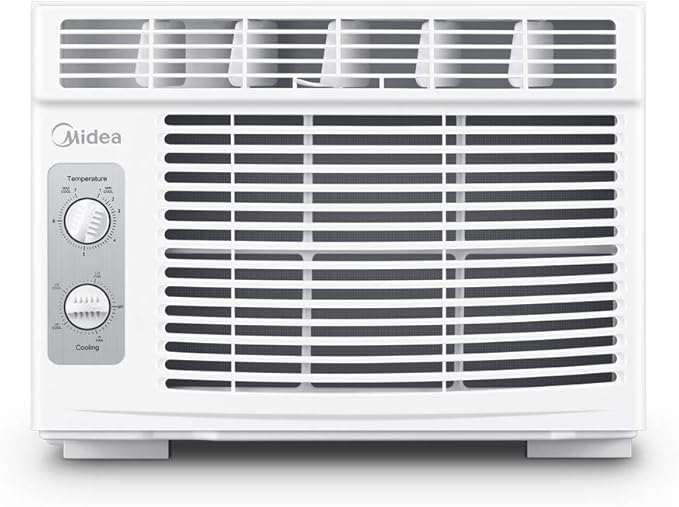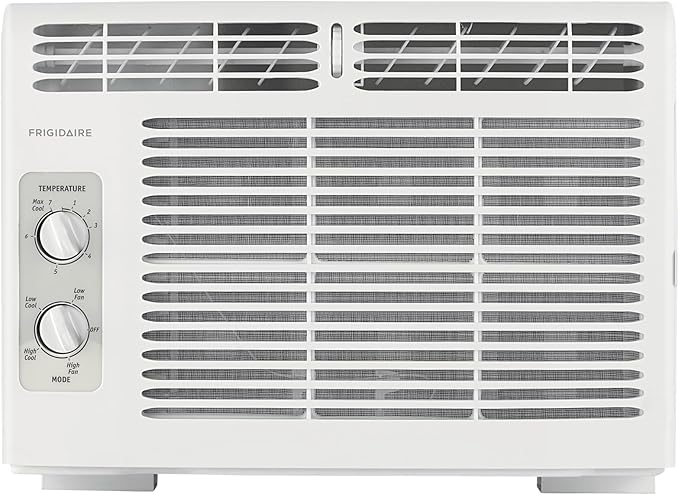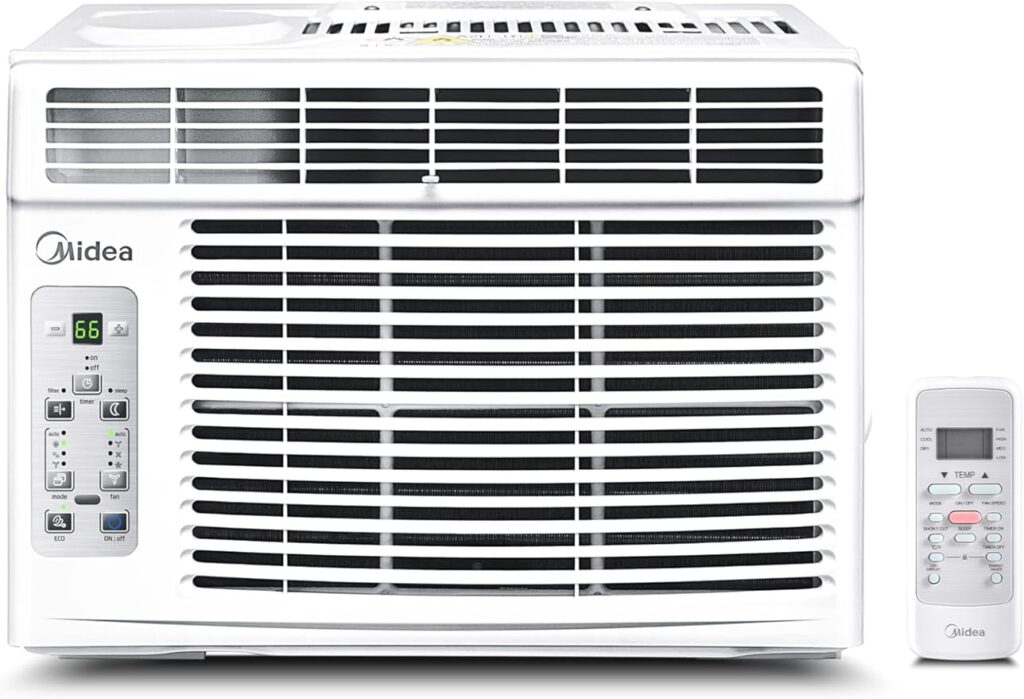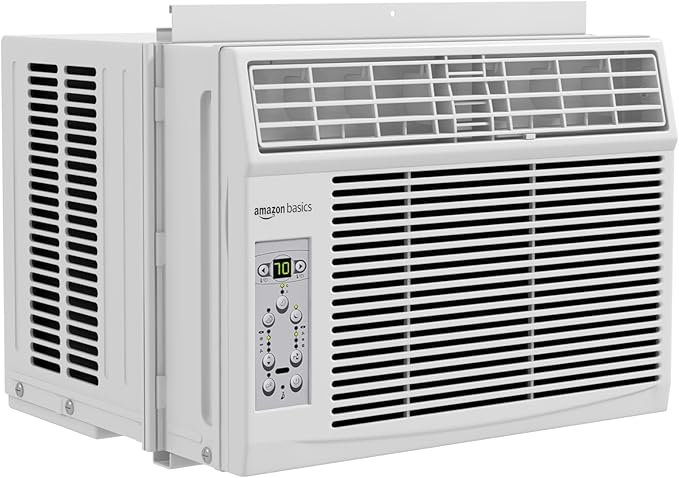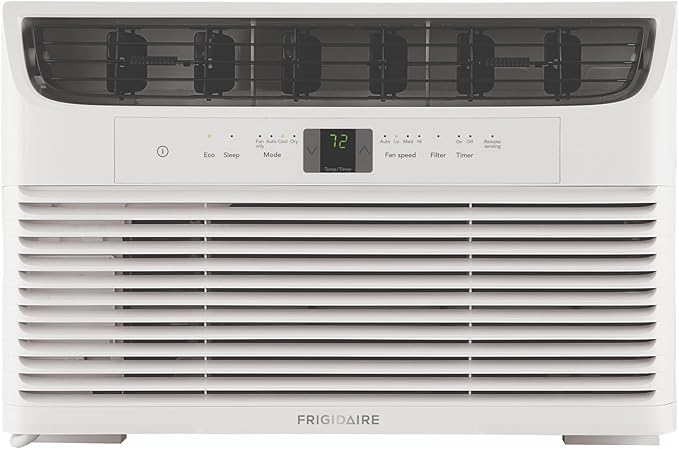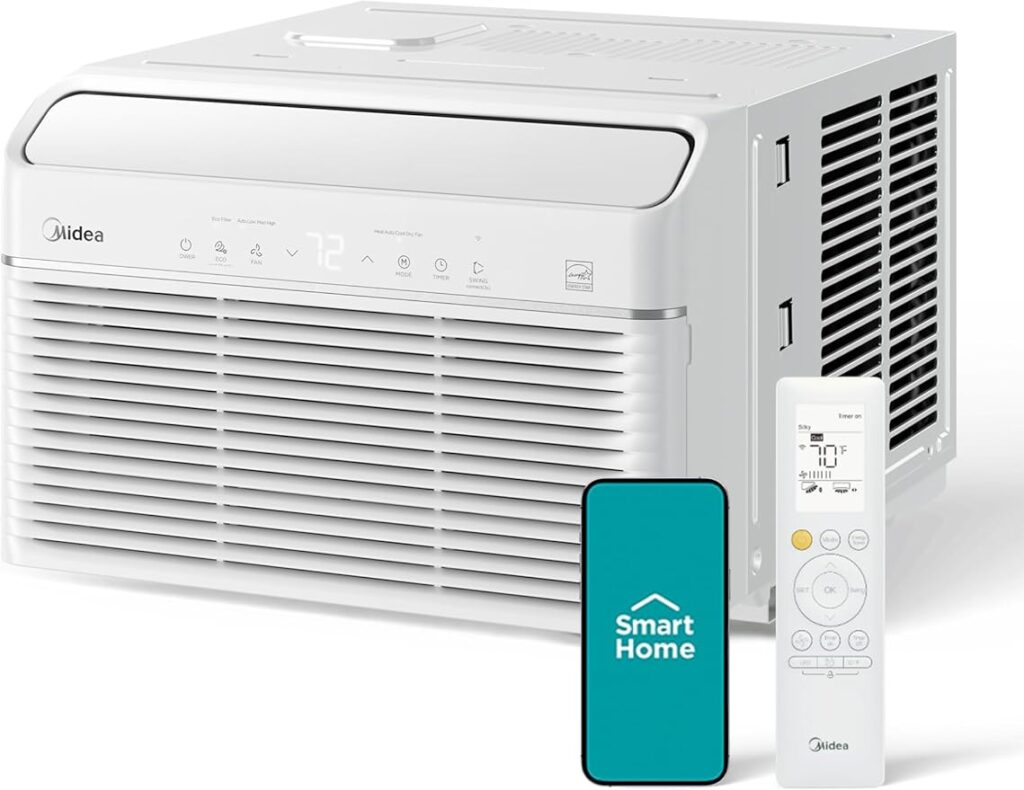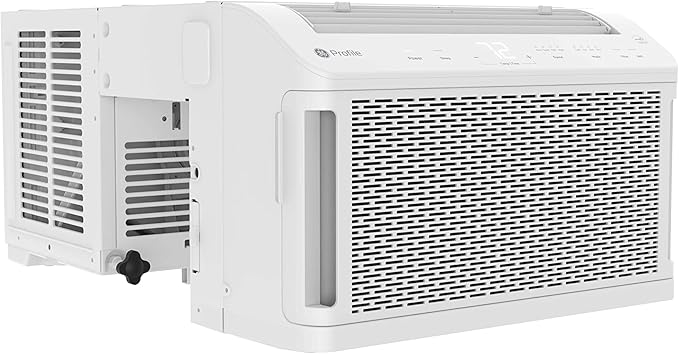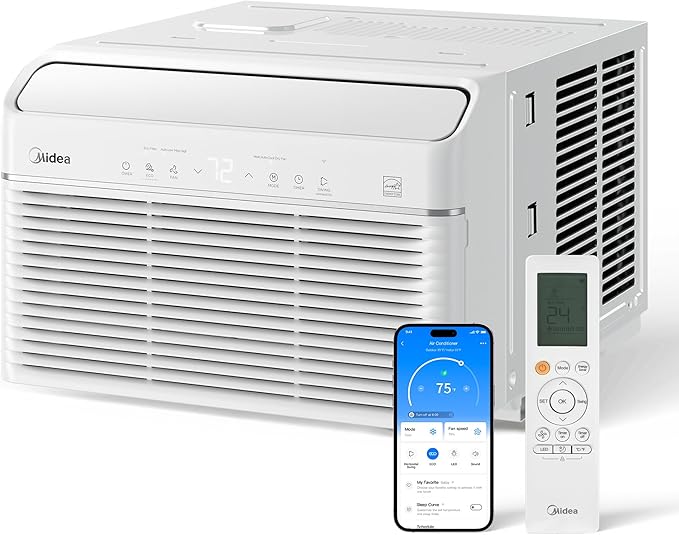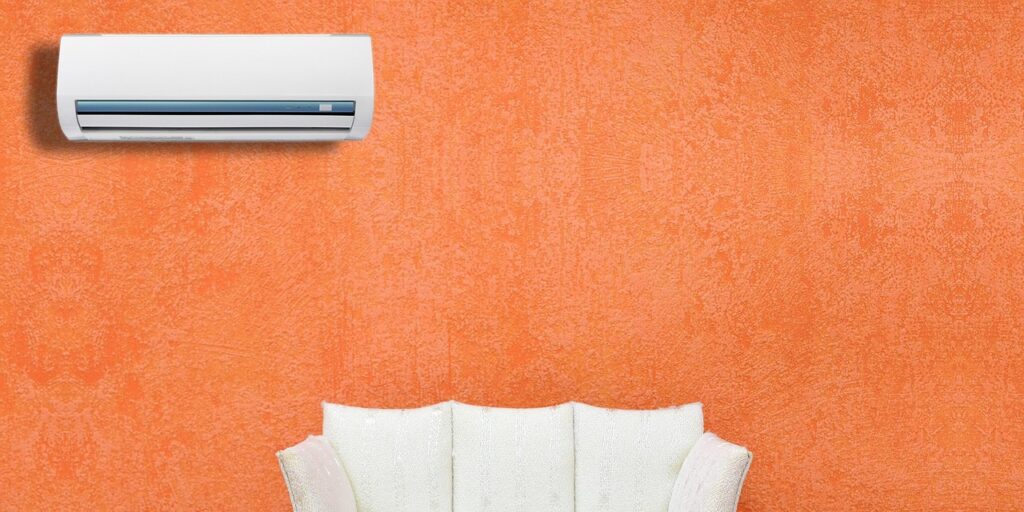We independently review everything we recommend. We may make money from the links on our site.
The Best Window AC Unit
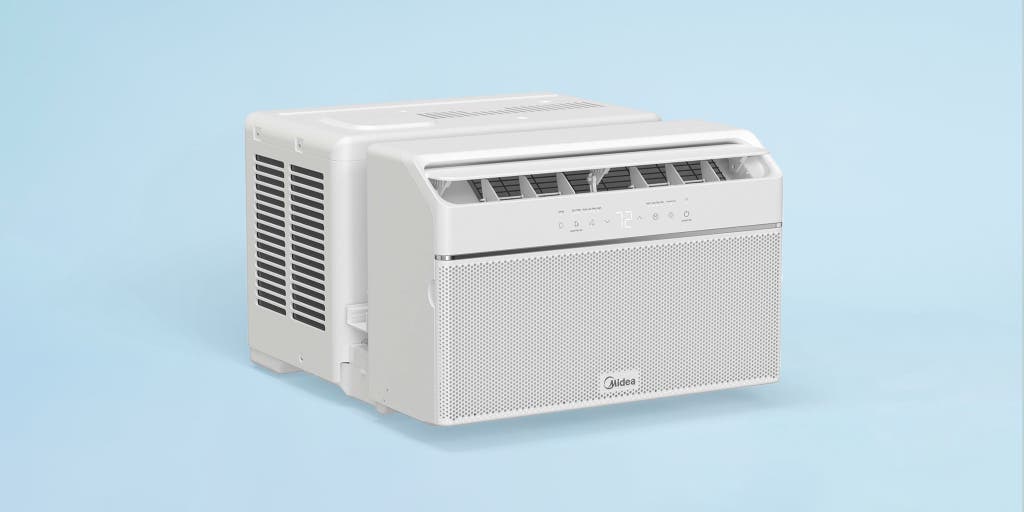
Window air conditioners remain one of the most cost-effective and practical cooling solutions for homeowners and renters alike. With rising energy costs and increasing temperature extremes, selecting the right window unit has become more critical than ever. This comprehensive guide examines the latest models, installation techniques, and energy-saving features to help you make an informed decision that delivers optimal comfort while minimizing operational costs.
Everything We Recommend
Quiet Cooling Budget
The Best Quiet Cooling Budget
Enjoy ultra-quiet cooling with Midea’s EasyCool, perfect for small rooms and light sleepers. Its compact design, simple controls, and low energy costs make it ideal for renters seeking peaceful, budget-friendly comfort.
Buying Options
Simple Room Cooler
The Best Simple Room Cooler
Reliable and easy to use, this Frigidaire model offers durable performance with simple mechanical controls. It’s a perfect choice for offices or bedrooms where no-frills, consistent cooling is a must.
Buying Options
Energy Efficient
The Best Energy Efficient Option
Cut electricity costs with this energy-efficient unit that smartly adjusts power to match room conditions. Perfect for eco-conscious users seeking reliable cooling and modern programmable features.
Buying Options
Value Cooling Choice
The Best Value Cooling Choice
Get unbeatable value with this affordable yet fully featured unit. It cools medium rooms efficiently and includes digital controls, multiple fan speeds, and a dehumidifier—all at an entry-level price.
Buying Options
Airflow Distribution
The Best Airflow Distribution Design
Designed for even cooling, this model eliminates hot spots with multi-directional airflow and precise temperature control. Ideal for challenging room layouts and those prioritizing comfort and air quality.
Buying Options
Smart Energy Saver
The Best Smart Energy Saver
Save energy without sacrificing comfort. This smart inverter AC offers voice control, app access, and real-time efficiency optimization—perfect for tech-savvy users and smart homes.BEE Star Rating:Energy Star
Buying Options
Powerful Cooling Midrange
The Best Powerful Cooling Midrange
Powerful enough for large rooms, this unit cools fast and efficiently. With added heating, digital precision, and a sturdy chassis, it’s a great all-season climate solution for demanding users.
Buying Options
Full-Window Visibility AC
The Best Full-Window Visibility AC
Keep your view and your cool. This innovative see-through AC blends style and power, delivering quiet, high-capacity cooling without blocking sunlight—ideal for modern, design-conscious homes.
Buying Options
Smart Cooling Upgrade
The Best Smart Cooling Upgrade
Midea’s top-tier model combines strong cooling with advanced smart features, including energy tracking and full app control. It’s the perfect upgrade for large rooms and smart home systems.
Buying Options
Understanding Window Air Conditioner Technology
Modern window air conditioners have evolved significantly from their predecessors, incorporating advanced features that enhance both performance and energy efficiency. These self-contained units combine cooling, dehumidification, and air circulation functions within a single compact design that fits securely in standard window openings.
The fundamental operation involves refrigerant cycling through evaporator and condenser coils, with the evaporator side facing your room and the condenser side extending outside. This design ensures efficient heat transfer while maintaining proper airflow distribution throughout your living space.
Recent technological advances include variable-speed compressors, smart connectivity features, and improved insulation materials that reduce noise levels while maximizing cooling capacity. Understanding these innovations helps consumers identify units that deliver superior performance and long-term value.
Determining Your Cooling Requirements
Calculating the appropriate cooling capacity represents the most crucial step in selecting a window air conditioner. The British Thermal Unit (BTU) rating indicates how much heat the unit can remove from your space per hour, directly correlating to the room size it can effectively cool.
For rooms measuring 100-150 square feet, units with 5,000-6,000 BTU capacity typically provide adequate cooling. Medium-sized spaces between 150-250 square feet require 6,000-7,000 BTU units, while larger rooms up to 300 square feet need 7,000-8,500 BTU capacity. Rooms exceeding 300 square feet often require units with 8,500-12,000 BTU or higher ratings.
However, square footage alone does not determine optimal sizing. Factors such as ceiling height, insulation quality, window exposure, and heat-generating appliances significantly impact cooling requirements. Rooms with poor insulation, southern exposure, or multiple heat sources may require 10-20% additional capacity beyond standard calculations.
Professional HVAC technicians recommend conducting a detailed heat load calculation that considers these variables, ensuring your selected unit operates efficiently without excessive energy consumption or inadequate cooling performance.
Energy Efficiency and Cost Considerations
The Energy Efficiency Ratio (EER) and Seasonal Energy Efficiency Ratio (SEER) ratings provide critical insights into long-term operating costs. Units with higher efficiency ratings consume less electricity while delivering equivalent cooling performance, resulting in substantial savings over the unit’s lifespan.
Current Energy Star certified window air conditioners must achieve minimum EER ratings of 12.1 for units under 8,000 BTU and 12.0 for larger capacity models. Premium units often exceed these minimums, with some achieving EER ratings above 15.0, translating to 20-30% lower energy consumption compared to standard efficiency models.
According to the U.S. Department of Energy, replacing a 10-year-old window air conditioner with an Energy Star certified model can reduce cooling costs by approximately 20%. For households operating multiple units or running air conditioning extensively during peak summer months, these savings accumulate to hundreds of dollars annually.
Smart features such as programmable thermostats, WiFi connectivity, and occupancy sensors further enhance efficiency by optimizing operation based on actual usage patterns rather than continuous operation at fixed settings.
Installation Best Practices and Safety Requirements
Proper installation ensures optimal performance, safety, and longevity of your window air conditioner. The installation process involves several critical steps that require careful attention to detail and adherence to manufacturer specifications.
Begin by measuring your window opening to ensure compatibility with your selected unit. Standard window air conditioners accommodate openings between 23-36 inches wide, though specific models may have different requirements. The window must provide adequate structural support, typically requiring reinforcement for units exceeding 80 pounds.
Creating a secure seal around the unit prevents air leakage that reduces efficiency and increases energy consumption. Quality installation kits include adjustable side panels, weatherstripping, and foam gaskets that eliminate gaps between the unit and window frame. Professional installers recommend caulking any remaining small gaps to achieve maximum air tightness.
Electrical requirements vary by unit capacity, with smaller models operating on standard 115V household circuits while larger units may require dedicated 230V circuits. The National Electrical Code mandates proper grounding and circuit protection to prevent electrical hazards.
Safety considerations include ensuring adequate support for the unit’s weight, maintaining proper drainage to prevent water damage, and securing the unit against accidental displacement. Professional installation services, while adding upfront costs, often provide warranties and ensure compliance with local building codes.
Top Window AC Unit Our Picks
After extensive testing and analysis, we have identified the most exceptional window air conditioners that deliver outstanding performance across different user needs and budgets. Each selection represents the pinnacle of its category, offering unique advantages that address specific cooling challenges faced by modern homeowners.
The Midea EasyCool revolutionizes budget cooling with its remarkably quiet operation, measuring just 57 decibels during standard operation. This whisper-quiet performance stems from advanced fan blade design and sound-dampening insulation that eliminates the traditional rattling and humming associated with budget units. Residents of studio apartments and small bedrooms particularly appreciate how this unit maintains peaceful environments during sleep hours while delivering consistent 5,000 BTU cooling capacity.
The compact design accommodates windows as narrow as 23 inches while the simplified control panel eliminates confusion for users who prefer straightforward operation. Energy efficiency ratings exceed standard requirements, resulting in monthly operating costs under twenty dollars for typical usage patterns. Installation requires minimal tools and effort, making this ideal for renters who need temporary cooling solutions without professional assistance.
Frigidaire delivers uncompromising reliability through this streamlined unit that prioritizes essential cooling functions over complex features. The mechanical controls provide intuitive operation that remains functional even during power fluctuations that disable electronic systems. Two cooling speeds and two fan-only settings allow precise temperature control while the full-function remote enables convenient adjustments from across the room.
The robust construction incorporates corrosion-resistant materials that withstand harsh weather conditions, extending operational lifespan beyond ten years with proper maintenance. Small business owners frequently select this model for office spaces and retail environments where consistent performance outweighs advanced features. The restart function automatically resumes previous settings after power interruptions, ensuring continuous comfort without manual intervention.
This energy-efficient powerhouse achieves an impressive 12.1 EER rating while delivering 6,000 BTU cooling capacity sufficient for rooms up to 250 square feet. The advanced compressor technology automatically adjusts power consumption based on ambient temperature conditions, reducing energy usage during mild weather while maintaining full capacity during peak heat conditions. Homeowners report annual electricity savings of thirty to forty percent compared to standard efficiency models.
The programmable timer function operates cooling cycles during off-peak electricity hours, maximizing savings for households with time-of-use utility rates. Smart sensors detect room occupancy and adjust operation accordingly, preventing unnecessary energy consumption when spaces remain unoccupied. The washable filter system eliminates ongoing replacement costs while maintaining optimal air quality through effective dust and allergen removal.
Amazon’s private label air conditioner delivers remarkable cooling performance at an unprecedented price point without sacrificing essential features. The 6,000 BTU capacity efficiently cools medium-sized rooms while maintaining operating costs comparable to smaller units through optimized energy management. The digital display and remote control provide modern convenience typically found in premium models.
Seven-speed fan settings offer precise airflow control for different comfort preferences, while the 24-hour programmable timer enables automated operation that aligns with daily schedules. The dehumidification function removes excess moisture during humid conditions, improving comfort levels while reducing strain on the cooling system. Installation hardware and comprehensive instructions ensure successful setup without additional purchases or professional assistance.
Revolutionary airflow engineering distributes cooled air throughout entire rooms rather than creating localized cold zones near the unit. The multi-directional louvers automatically oscillate to eliminate hot spots while the powerful fan motor ensures adequate air circulation in rooms with challenging layouts or high ceilings. Users consistently report more uniform temperature distribution compared to conventional designs.
The effortless temperature control system maintains precise comfort levels within one degree of the selected setting, preventing the temperature fluctuations that characterize inferior units. Sleep mode gradually adjusts cooling output during nighttime hours, optimizing energy efficiency while maintaining comfortable sleeping conditions. The antimicrobial filter treatment inhibits bacteria and mold growth, contributing to healthier indoor air quality.
Save on energy costs and enjoy ultimate comfort with this energy star certified unit.The intelligent inverter technology represents the future of residential cooling through continuous compressor speed adjustments that match cooling demand in real-time. This sophisticated system eliminates the energy waste associated with traditional on-off cycling while maintaining consistent temperature control that enhances comfort levels. Smart connectivity enables remote monitoring and control through smartphone applications that provide energy usage insights and optimization recommendations.
The built-in WiFi capability integrates seamlessly with Alexa and Google Assistant for voice control convenience that appeals to modern smart home environments. Geofencing technology automatically adjusts settings based on occupancy patterns, ensuring optimal comfort upon arrival while minimizing energy consumption during absences. The advanced filtration system incorporates activated carbon layers that remove odors and volatile organic compounds for superior air quality.
This robust cooling solution handles large rooms up to 450 square feet with authority while maintaining reasonable energy consumption through efficient compressor design. The powerful fan motor generates substantial airflow that quickly reduces temperatures during extreme heat conditions, providing rapid relief when returning to hot indoor spaces. Commercial-grade components ensure reliable operation throughout extended cooling seasons.
The supplemental heating function provides year-round climate control capabilities that eliminate the need for separate heating appliances in moderate climates. Electronic controls with digital temperature display offer precise adjustment capabilities while the remote control includes timer functions for automated operation. The slide-out chassis design simplifies seasonal installation and removal for users who prefer window access during cooler months.
The innovative clear panel design maintains natural light transmission while delivering powerful 12,000 BTU cooling capacity for large spaces up to 550 square feet. This architectural approach addresses the primary complaint about traditional window units that block significant portions of window openings and restrict outdoor views. The transparent design integrates aesthetically with modern interior design themes while providing industrial-strength cooling performance.
Advanced sound dampening technology reduces operational noise to levels comparable to premium through-wall units despite the powerful cooling capacity. The remote control system includes advanced programming features that accommodate complex scheduling requirements for households with varying occupancy patterns. Installation requires professional expertise due to the specialized mounting system, but the enhanced functionality and visual appeal justify the additional investment for discerning homeowners.
This flagship model combines maximum cooling capacity with cutting-edge smart technology that transforms the traditional air conditioning experience. The 12,000 BTU output efficiently manages large rooms and open floor plans while the inverter technology maintains precise temperature control that eliminates uncomfortable fluctuations. Smart sensors continuously monitor ambient conditions and automatically optimize performance for maximum efficiency.
The comprehensive smartphone application provides detailed energy consumption analytics, maintenance reminders, and remote troubleshooting capabilities that reduce service calls and extend equipment lifespan. Integration with popular home automation platforms enables sophisticated climate control scenarios that coordinate with lighting, security, and entertainment systems. The premium construction incorporates corrosion-resistant materials and advanced insulation that ensure reliable operation in challenging environmental conditions while maintaining whisper-quiet performance levels.
Maintenance and Troubleshooting Guidelines
Regular maintenance significantly extends the lifespan of window air conditioners while maintaining optimal performance and energy efficiency. Monthly cleaning of air filters prevents dust accumulation that restricts airflow and reduces cooling capacity.
Washable filters require gentle cleaning with mild soap and water, followed by complete drying before reinstallation. Disposable filters need replacement every 30-60 days during peak usage periods, depending on air quality and operating hours.
Annual professional maintenance includes cleaning evaporator and condenser coils, checking refrigerant levels, and inspecting electrical connections. These services typically cost $75-150 but prevent costly repairs and ensure reliable operation throughout the cooling season.
Common troubleshooting issues include inadequate cooling, unusual noises, and water leakage. Inadequate cooling often results from dirty filters, blocked air vents, or insufficient unit capacity for the space. Unusual noises may indicate loose mounting hardware, debris in the fan, or worn mechanical components requiring professional attention.
The Environmental Protection Agency emphasizes proper maintenance as essential for maintaining healthy indoor air quality, particularly for households with allergies or respiratory sensitivities.
Advanced Features and Smart Technology Integration
Modern window air conditioners incorporate sophisticated features that enhance user experience and optimize performance. Variable-speed compressors automatically adjust cooling output based on temperature variations, maintaining consistent comfort while reducing energy consumption.
Smart connectivity enables remote monitoring and control through smartphone applications, allowing users to adjust settings, monitor energy usage, and receive maintenance reminders from anywhere. Integration with voice assistants like Amazon Alexa and Google Assistant provides hands-free operation convenience.
Advanced filtration systems combine multiple filter types to remove dust, pollen, and odors from circulated air. Some models include UV sterilization features that eliminate bacteria and viruses, contributing to healthier indoor environments.
Sleep mode functionality gradually adjusts temperature settings throughout the night, optimizing comfort while reducing energy consumption during extended operation periods. This feature particularly benefits households that prefer cooler sleeping temperatures without excessive energy costs.
Environmental Impact and Sustainability Considerations
The environmental impact of window air conditioners extends beyond energy consumption to include refrigerant types and disposal considerations. Modern units utilize eco-friendly refrigerants with lower global warming potential compared to older R-22 refrigerants being phased out under international agreements.
Energy-efficient models reduce greenhouse gas emissions associated with electricity generation, particularly important as cooling demand increases with climate change. The International Energy Agency projects that global cooling energy demand will triple by 2050, making efficiency improvements critical for environmental sustainability.
Proper disposal of old units ensures safe handling of refrigerants and recovery of recyclable materials. Many utility companies and retailers offer rebate programs that incentivize replacement of inefficient units with Energy Star certified models, reducing both environmental impact and consumer costs.
Cost Analysis and Return on Investment
The total cost of ownership includes purchase price, installation expenses, annual operating costs, and maintenance requirements over the unit’s expected lifespan. Energy-efficient models typically carry higher upfront costs but deliver substantial savings through reduced electricity consumption.
A typical 8,000 BTU Energy Star certified unit operating 8 hours daily during a 4-month cooling season consumes approximately 1,920 kWh annually. At average electricity rates of $0.13 per kWh, annual operating costs total around $250. Upgrading to a high-efficiency model with 15% better performance reduces these costs to approximately $212, saving $38 annually.
Over a 10-year lifespan, efficiency improvements justify premium pricing through accumulated energy savings, improved comfort, and enhanced reliability. Financing options and utility rebates further improve the value proposition for energy-efficient models.
Selection Criteria and Decision Framework
Choosing the optimal window air conditioner requires balancing multiple factors including cooling capacity, energy efficiency, features, budget constraints, and installation requirements. Developing a systematic evaluation framework ensures decisions align with both immediate needs and long-term objectives.
Primary considerations include accurate capacity sizing based on detailed room analysis, efficiency ratings that minimize operating costs, noise levels appropriate for the installation location, and warranty coverage that protects against premature failures.
Secondary factors encompass smart features that enhance convenience, filtration capabilities for improved air quality, aesthetic considerations that complement interior design, and brand reputation for reliability and customer support.
Consumer review analysis from verified purchasers provides valuable insights into real-world performance, reliability issues, and satisfaction levels across different models and price ranges.
Conclusion
Window air conditioners continue evolving to meet changing consumer needs for efficiency, convenience, and environmental responsibility. The most successful installations result from careful planning that considers room characteristics, proper sizing calculations, quality installation practices, and ongoing maintenance requirements.
Current market offerings provide excellent options across all budget ranges, with energy-efficient models delivering substantial long-term savings that offset higher initial investments. Smart features and advanced filtration systems add value for consumers prioritizing convenience and air quality benefits.
The decision process benefits from thorough research, professional consultation when needed, and realistic assessment of cooling requirements and usage patterns. Quality window air conditioners, properly selected and installed, provide reliable cooling comfort for many years while contributing to energy conservation and environmental sustainability goals.
